Tips for a 2k mile road trip in the SC400
#16
1) There will be virtually no weight 2' to the rear of the bumper. The weight will be centered ~1' to the rear, with only the outer edge of the wheels (or tires?) back as far as you state. Pack heavier stuff in the back seat, to offset the weight of what is basically an extension of the trunk.
How far back the weight is centered all depends on how it's loaded. You have to include the distance from the bumper to the front of the rack plus the length of the rack (which we don't know). So weight centered 2' to the rear is a fair estimate. And how is packing heavy stuff in the back seat (if you're willing to put stuff on your back seat) going to offset weight behind the rear bumper? That just makes your rear end squat more unless you mean adding weight is going to give you a heavier vehicle overall.
2) Where are you coming up with 50 lb tongue weight? You're obviously assuming the wheels have tires -- yet to be confirmed -- based on the 200 lb figure, so only a 300 lb rental trailer to reach 500 lbs total (10% tongue weight estimate)? Even Harbor Freight's dinky little fold-up trailers weigh more than that. I would guess 500-600 lbs minimum for trailer weight, plus whatever goes in it.
Now we're up to 1000 lb for the trailer? That 100 lbs of tongue weight will still put strain on the suspension.
How far back the weight is centered all depends on how it's loaded. You have to include the distance from the bumper to the front of the rack plus the length of the rack (which we don't know). So weight centered 2' to the rear is a fair estimate. And how is packing heavy stuff in the back seat (if you're willing to put stuff on your back seat) going to offset weight behind the rear bumper? That just makes your rear end squat more unless you mean adding weight is going to give you a heavier vehicle overall.
2) Where are you coming up with 50 lb tongue weight? You're obviously assuming the wheels have tires -- yet to be confirmed -- based on the 200 lb figure, so only a 300 lb rental trailer to reach 500 lbs total (10% tongue weight estimate)? Even Harbor Freight's dinky little fold-up trailers weigh more than that. I would guess 500-600 lbs minimum for trailer weight, plus whatever goes in it.
Now we're up to 1000 lb for the trailer? That 100 lbs of tongue weight will still put strain on the suspension.
And anyway, t2d2, it sounds like you are just trying to be argumentative and trying to put down my total estimates. They are just estimates for thought, not rules.
--
#17
If I were to raise the rear suspension to possibly cancel the droop from the wheels and tires (tires are on the wheels), would that be a good shot at solving the problem of the handling? Below is a pic of the wheels. If I go with the 'cargo hitch' route, I'm more than likely going to try to have them upright together.
I don't know how you would raise your rear suspension on a temporary basis. However, some folks have noticed that their loads are best towed when the vehicle is level and the trailer is level. I usually try to keep my trailers level by adjusting the hitch ball height. As to hauling the tires upright. It's doable, but always harder than flat. The darn things keep wanting to roll around--imagine that!
 But of course, the tires would extend back almost as far upright as flat. All depends on how they fit on the rack. The tire diameter is probably 25-26" plus the distance from the bumper, plus whatever is behind the tires on the rack. Add in the wheel weight (~30#), and the tire weight (~22#), and the rack weight (25-60#) = 120 + 88 + 40 = 240# possibly. So off the bat, an estimate would be a hitch weight of 240#.
But of course, the tires would extend back almost as far upright as flat. All depends on how they fit on the rack. The tire diameter is probably 25-26" plus the distance from the bumper, plus whatever is behind the tires on the rack. Add in the wheel weight (~30#), and the tire weight (~22#), and the rack weight (25-60#) = 120 + 88 + 40 = 240# possibly. So off the bat, an estimate would be a hitch weight of 240#.--
#18
--
I don't know how you would raise your rear suspension on a temporary basis. However, some folks have noticed that their loads are best towed when the vehicle is level and the trailer is level. I usually try to keep my trailers level by adjusting the hitch ball height. As to hauling the tires upright. It's doable, but always harder than flat. The darn things keep wanting to roll around--imagine that! But of course, the tires would extend back almost as far upright as flat. All depends on how they fit on the rack. The tire diameter is probably 25-26" plus the distance from the bumper, plus whatever is behind the tires on the rack. Add in the wheel weight (~30#), and the tire weight (~22#), and the rack weight (25-60#) = 120 + 88 + 40 = 240# possibly. So off the bat, an estimate would be a hitch weight of 240#.
But of course, the tires would extend back almost as far upright as flat. All depends on how they fit on the rack. The tire diameter is probably 25-26" plus the distance from the bumper, plus whatever is behind the tires on the rack. Add in the wheel weight (~30#), and the tire weight (~22#), and the rack weight (25-60#) = 120 + 88 + 40 = 240# possibly. So off the bat, an estimate would be a hitch weight of 240#.
--
I don't know how you would raise your rear suspension on a temporary basis. However, some folks have noticed that their loads are best towed when the vehicle is level and the trailer is level. I usually try to keep my trailers level by adjusting the hitch ball height. As to hauling the tires upright. It's doable, but always harder than flat. The darn things keep wanting to roll around--imagine that!
 But of course, the tires would extend back almost as far upright as flat. All depends on how they fit on the rack. The tire diameter is probably 25-26" plus the distance from the bumper, plus whatever is behind the tires on the rack. Add in the wheel weight (~30#), and the tire weight (~22#), and the rack weight (25-60#) = 120 + 88 + 40 = 240# possibly. So off the bat, an estimate would be a hitch weight of 240#.
But of course, the tires would extend back almost as far upright as flat. All depends on how they fit on the rack. The tire diameter is probably 25-26" plus the distance from the bumper, plus whatever is behind the tires on the rack. Add in the wheel weight (~30#), and the tire weight (~22#), and the rack weight (25-60#) = 120 + 88 + 40 = 240# possibly. So off the bat, an estimate would be a hitch weight of 240#.--
#19
I have adjustable coilovers that would be my way of temporarily raising the height. Leveling wouldn't be relevant for a cargo hitch I'd assume? Since there is not a pivot point. As far as placement of the wheels I intend to place them as you would see a spare on the back of a jeep (face of the wheel towards the rear). You are saying that it's hard? How so?
Adjustable coil overs, that's good. As to vertically placed wheels, if you were to use a net to cover them, for example, you could limit the side, rolling motion, somewhat, but your base is the round bottom of the wheel. Round bottoms roll. Rolling back and forth tends to loosen tie downs. Flat bottoms don't roll. Depends a lot on the shape of your rack, too. If the tires slipped in like a pocket with rails on the sides, there would be no roll tendency. All cargo platforms are different in size, it seems. There is no standard other than needing a 2" receiver. Here are some options:
Hitch Cargo Carriers - Cargo Carriers - The Home Depot
--
#21
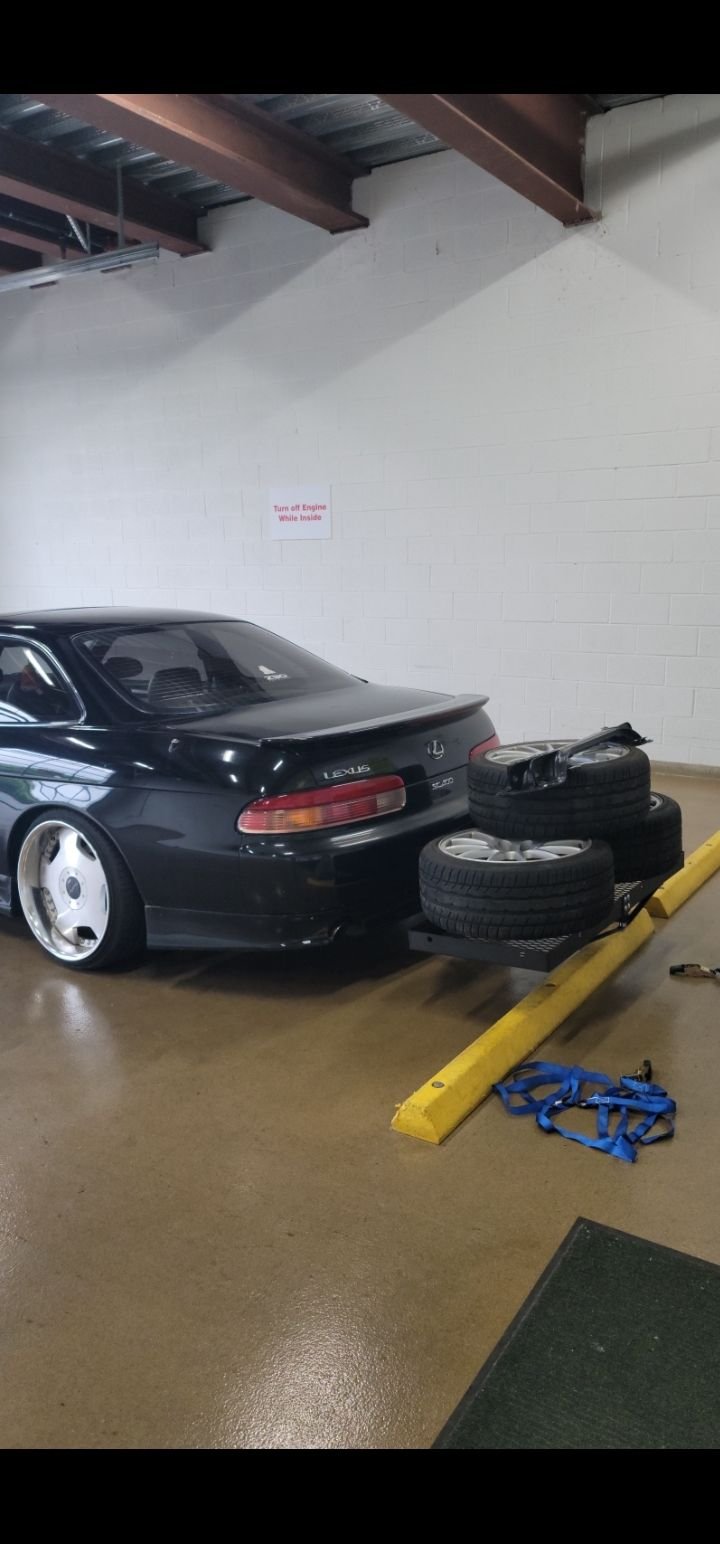
Pyramid Stack

Oreo Stack
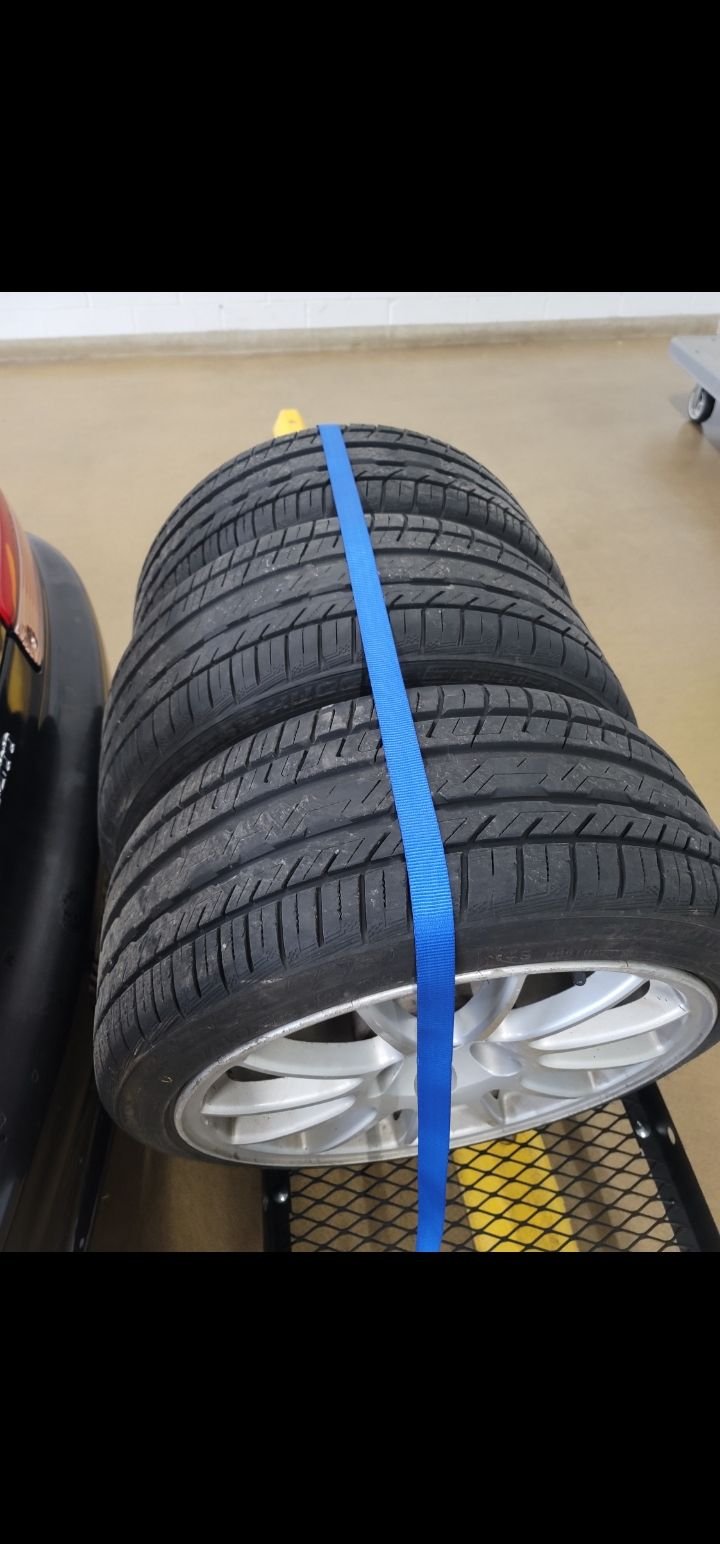
Size of ratchet straps
So my trip is coming up soon. I've installed a Class 1 1.25 CURT Hitch. I've installed a 18110 CURT Hitch Mounted Carrier along with ratchet straps.
I've test loaded the three wheels onto the carrier. They all managed to fit. Theres about a finger width gap between the wheel and fender still. I'm concerned on proper placement. I've attached pics with two positions I came up with.
The first one I plan on doing a hashtag securement # over the pyramid of wheels, maybe interlacing into the spokes.
The second option was to have them sit upright in the middle of the carrier, with the two sets of ratchet straps going directly across from left to right inside of the center caps. The second set of two ratchet straps would start from the bumper of the car to the end of the carrier but in a crossing form of an X through the center caps as well. So looking at it from above you will have this sort of shape =×=
Would anyone have input on the safest way to approach this? I'm looking at the second option as it might give a bit of extra room for any small luggage bags on each side.
#22
I would do like the second pic, but with one full-width front and rear chock to keep them from rolling. If you can get a 2x4 cut length-wise at a 45 degree angle, that would probably work well. Secure it well to the expanded metal below, and the tires can't roll unless they somehow hop it, which shouldn't be possible once strapped down.
Run the ratchet straps through the wheels, not over the tires. The way you have it in the third pic, vibrations will encourage the straps to walk to the point of least tension ... right off the top of the tires. There's nothing to keep them in place on a round object, unless you create a basket strap where the opposing straps are actually connected to each other over the top.
Put a moving blanket between the wheels and the bumper to make sure they aren't rubbing the paint off.
Run the ratchet straps through the wheels, not over the tires. The way you have it in the third pic, vibrations will encourage the straps to walk to the point of least tension ... right off the top of the tires. There's nothing to keep them in place on a round object, unless you create a basket strap where the opposing straps are actually connected to each other over the top.
Put a moving blanket between the wheels and the bumper to make sure they aren't rubbing the paint off.
The following users liked this post:
Slackful (06-29-21)
#23
I would do like the second pic, but with one full-width front and rear chock to keep them from rolling. If you can get a 2x4 cut length-wise at a 45 degree angle, that would probably work well. Secure it well to the expanded metal below, and the tires can't roll unless they somehow hop it, which shouldn't be possible once strapped down.
Run the ratchet straps through the wheels, not over the tires. The way you have it in the third pic, vibrations will encourage the straps to walk to the point of least tension ... right off the top of the tires. There's nothing to keep them in place on a round object, unless you create a basket strap where the opposing straps are actually connected to each other over the top.
Put a moving blanket between the wheels and the bumper to make sure they aren't rubbing the paint off.
Run the ratchet straps through the wheels, not over the tires. The way you have it in the third pic, vibrations will encourage the straps to walk to the point of least tension ... right off the top of the tires. There's nothing to keep them in place on a round object, unless you create a basket strap where the opposing straps are actually connected to each other over the top.
Put a moving blanket between the wheels and the bumper to make sure they aren't rubbing the paint off.
I'll definitely secure more straps before I go for an extra measure.
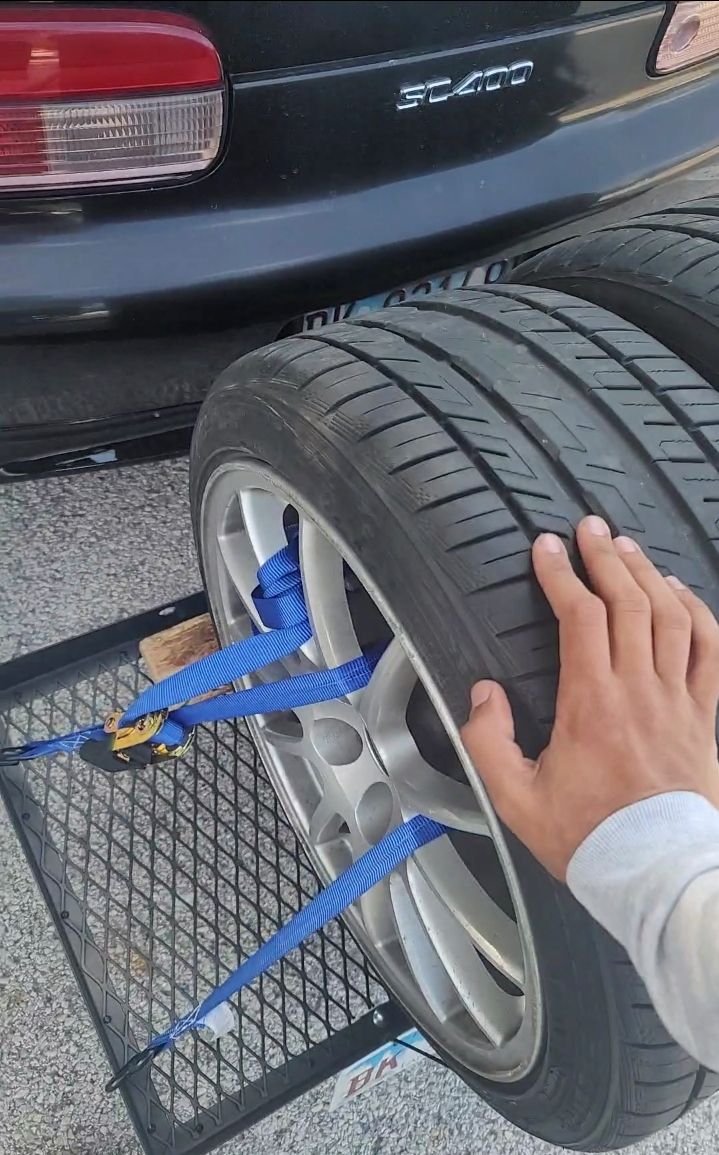
#24
All hitch receivers have internal play, I assume to account for manufacturing tolerances and rust build-up, either of which could seize things up pretty bad. Some bike carriers have screw systems instead of regular hitch pins, to tension the stinger to one side of the receiver.
If it bothers you, you could probably just break off some cedar shims and tape over them to keep them in place for the trip. Shouldn't be too hard to remove later, as pulling the stinger out would release tension on them.
If it bothers you, you could probably just break off some cedar shims and tape over them to keep them in place for the trip. Shouldn't be too hard to remove later, as pulling the stinger out would release tension on them.
#25
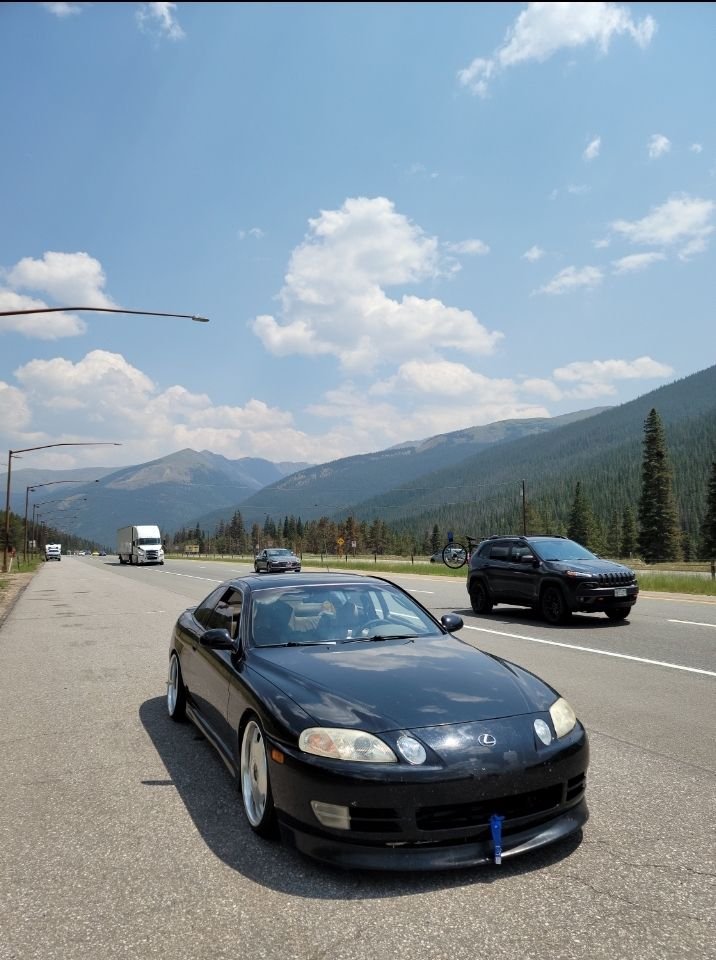

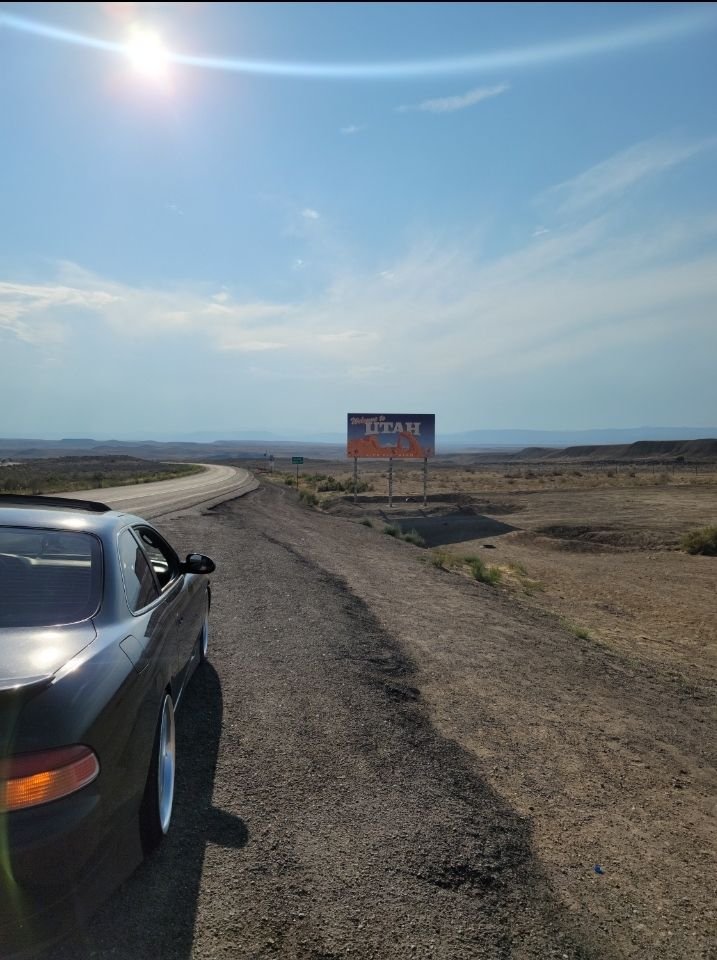

Late late night post but I've arrived in Southern California.
It was an amazing/horrible experience mostly amazing thought. Suprisingly the cargo hitch and tire load was never an issue, (thanks t2d2 and everyone who assisted with there knowledge) although I was almost stranded in Iowa because my starter wasnt firmly mounted (My fault on a rushed DIY). My magic drift lip fell off so I had to tie it back on.
Here are some images. Only from Utah and Colorado cause everything else was corn and desert.
Last edited by Slackful; 07-29-21 at 11:33 PM.
The following 2 users liked this post by Slackful:
joewitafro (07-30-21),
Kira X (07-30-21)
The following users liked this post:
Slackful (07-30-21)
The following users liked this post:
RudysSC (07-30-21)
Thread
Thread Starter
Forum
Replies
Last Post




